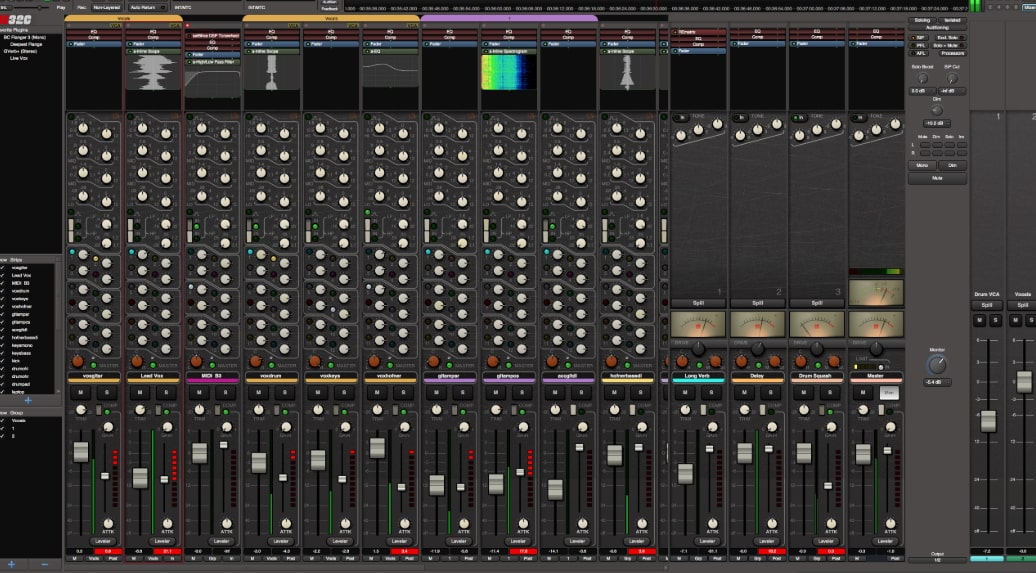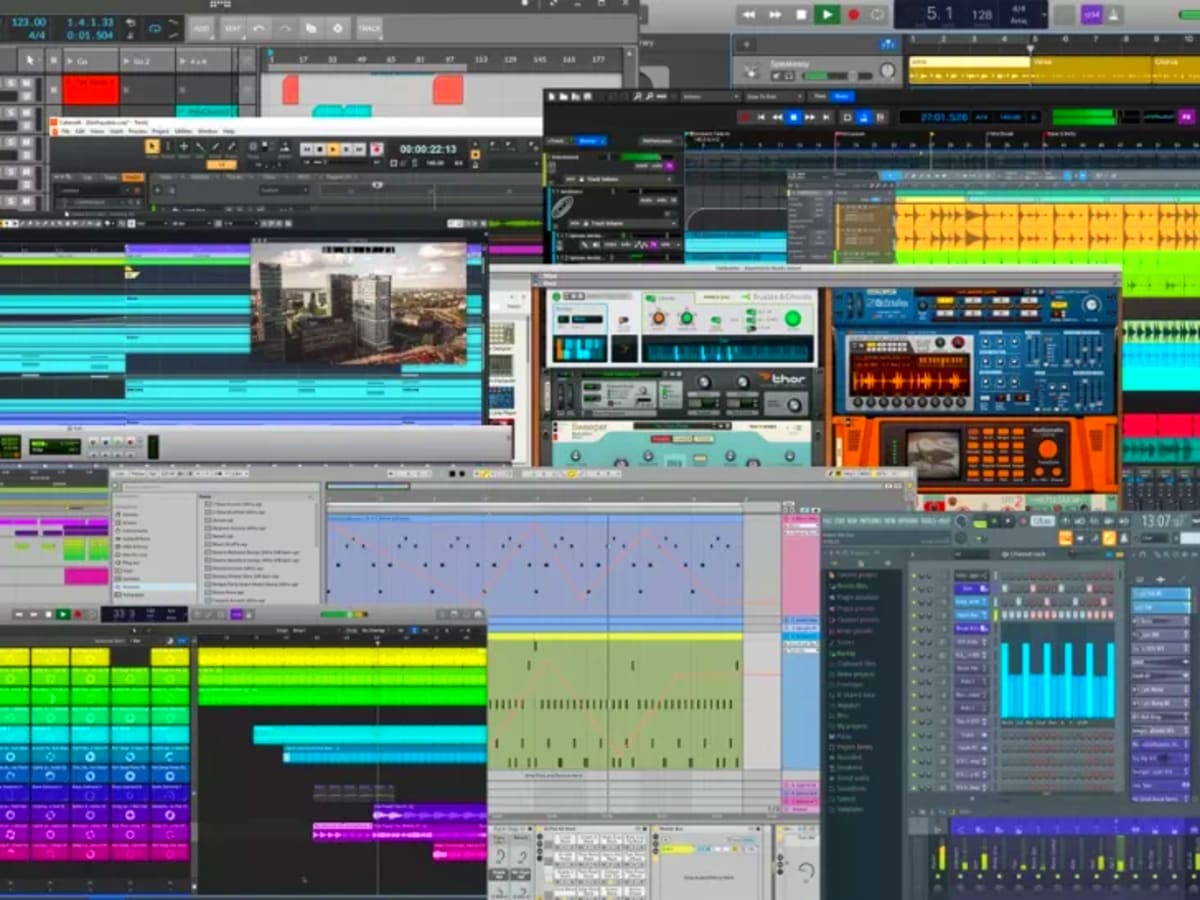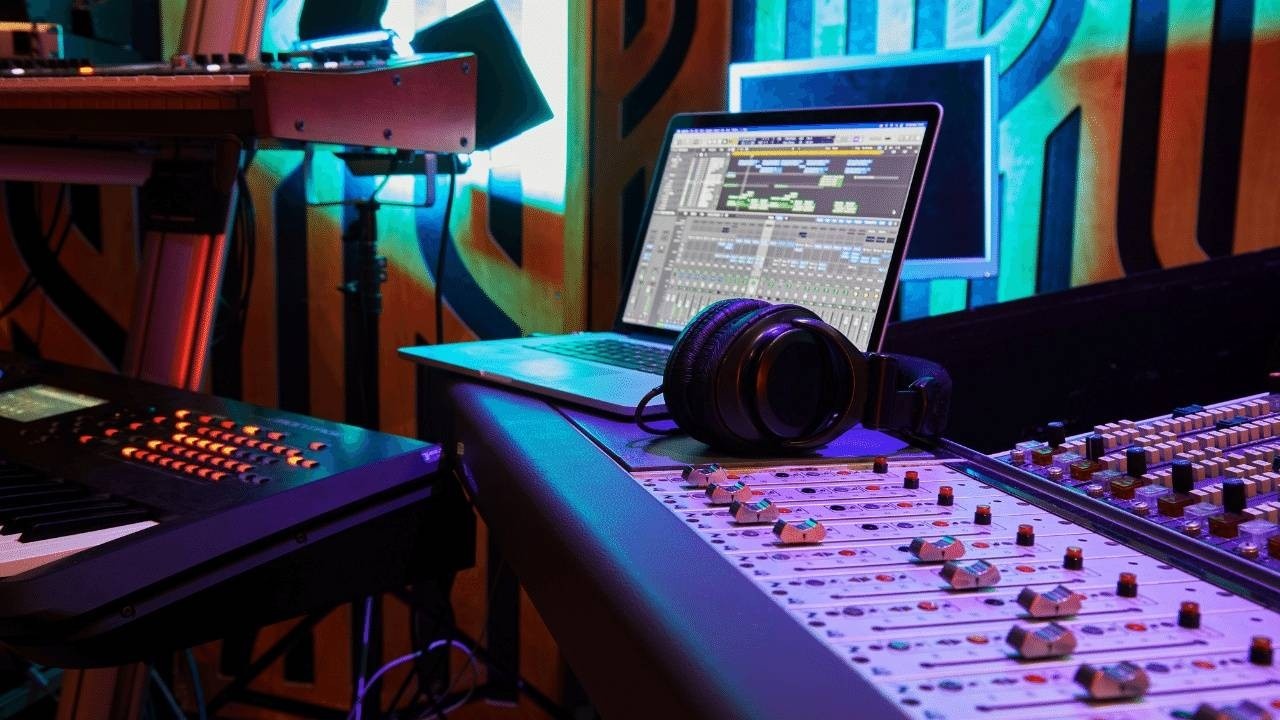Creating the Perfect Digital Audio Workstation Setup for Music Installations
Setting up a Digital Audio Workstation (DAW) for music installations can seem daunting, but with the right guidance, it’s a rewarding process. For practical advice and assistance, readers can also check out theautonomics.com for additional resources. A well-configured Digital Audio Workstation Setup for Music Installations ensures seamless playback, reliable performance, and a professional sound for your project. This article provides a comprehensive guide to help you achieve just that.
Explore
- 1 Choosing the Right Hardware for Your Digital Audio Workstation Setup for Music Installations
- 2 Software Selection for a Smooth Digital Audio Workstation Setup for Music Installations
- 3 Optimizing Your Digital Audio Workstation Setup for Music Installations: Practical Tips
- 4 Considering Specific Installation Needs for Your Digital Audio Workstation Setup for Music Installations
- 5 The Importance of a Well-Planned Digital Audio Workstation Setup for Music Installations
- 6 Final Thoughts on Your Digital Audio Workstation Setup for Music Installations
Choosing the Right Hardware for Your Digital Audio Workstation Setup for Music Installations
The foundation of any successful Digital Audio Workstation Setup for Music Installations is robust hardware. This includes the computer itself, audio interface, and any additional peripherals.
The Computer: The Brains of the Operation
Your computer is the heart of your Digital Audio Workstation Setup for Music Installations. For installations, reliability is paramount. You need a machine that can handle the demands of continuous playback without crashing or experiencing performance issues. Consider a system with a powerful processor (CPU), ample RAM (at least 16GB, but more is better for complex installations), and a fast solid-state drive (SSD) for quick loading times. Avoid relying on hard disk drives (HDDs) as they are prone to failure and slower access times, both critical problems in a live installation environment. A dedicated graphics card (GPU) isn’t strictly necessary for audio processing, but it can improve performance in some DAWs, particularly those with visual elements.
The Audio Interface: The Gateway to Sound
Your audio interface connects your computer to the outside world, allowing you to input and output audio signals. For a Digital Audio Workstation Setup for Music Installations, you’ll need an interface with sufficient inputs and outputs to accommodate all your audio sources and playback devices. Consider the number of channels you need, the quality of the converters (AD/DA), and the interface’s latency (the delay between input and output). Low latency is crucial for a responsive and professional-sounding installation. Look for interfaces with features like MIDI connectivity, word clock synchronization, and robust power supplies for reliable operation.
Peripherals: Enhancing Your Workflow
While not essential, certain peripherals can greatly enhance your Digital Audio Workstation Setup for Music Installations. A high-quality keyboard and mouse can improve your workflow, while studio monitors provide accurate sound reproduction for mixing and mastering. Consider adding a control surface for hands-on control of your DAW, or a dedicated MIDI keyboard for composing and performing. Reliable power conditioning is also important to prevent power surges from damaging your equipment. For installations requiring multiple audio outputs, a digital mixer or a matrix router can be very useful for routing audio signals efficiently.
Software Selection for a Smooth Digital Audio Workstation Setup for Music Installations

The software you choose is just as important as the hardware in your Digital Audio Workstation Setup for Music Installations. The best DAW for you will depend on your specific needs and preferences.
Choosing Your Digital Audio Workstation
Numerous Digital Audio Workstations are available, each with its own strengths and weaknesses. Popular choices include Ableton Live, Logic Pro X, Pro Tools, Cubase, and Reaper. Consider factors like ease of use, features, compatibility with your hardware, and the overall workflow that best suits your needs. For installations, consider DAWs that offer robust features for automation, scripting, and remote control. Some DAWs offer dedicated plugins for installation-specific tasks, which might make them more suitable.
Essential Plugins for Music Installations
Plugins extend the functionality of your DAW, allowing you to add effects, process audio, and create virtual instruments. For a Digital Audio Workstation Setup for Music Installations, you’ll need plugins that ensure reliable performance and high-quality sound. Consider plugins for effects processing (reverb, delay, EQ), dynamics processing (compression, limiting), and mastering. You’ll also need virtual instruments if your installation requires synthesized sounds or sampled instruments. Opt for high-quality plugins from reputable developers known for their stability and reliability in professional applications.

Setting Up Automation and Control
Automation is crucial for a successful Digital Audio Workstation Setup for Music Installations. This allows you to control various aspects of your audio playback, such as volume, effects, and MIDI parameters, over time or in response to external triggers. Your DAW should have powerful automation capabilities, and you might need to learn scripting or use external control systems to create complex automation schemes. For installations, having the ability to remotely control your DAW is highly desirable. This can be achieved through various methods, including network control protocols or dedicated hardware interfaces.
Optimizing Your Digital Audio Workstation Setup for Music Installations: Practical Tips
Once you’ve chosen your hardware and software, it’s essential to optimize your Digital Audio Workstation Setup for Music Installations for reliable performance and a smooth workflow.
Managing Your Project Files

Organizing your project files is crucial for a streamlined workflow, especially in complex installations. Use a clear and consistent file naming convention, and keep your project files well-organized in folders. Avoid using overly long file paths, which can cause issues with some DAWs. Regularly back up your project files to prevent data loss. Consider using a cloud storage service for offsite backups, providing an additional layer of protection against hardware failure.
Monitoring and Troubleshooting
Monitoring your system’s performance is essential for identifying potential problems before they affect your installation. Use your DAW’s built-in metering tools to monitor CPU usage, disk I/O, and other important parameters. Learn how to troubleshoot common issues, such as audio dropouts, latency problems, and crashes. Having a plan for dealing with unexpected problems is essential for maintaining the smooth operation of your installation. Regular system maintenance, such as updating drivers and software, is also critical for preventing problems.
Testing and Refining
Thorough testing is vital to ensure your Digital Audio Workstation Setup for Music Installations performs reliably in a real-world setting. Test your installation in the actual environment where it will be used, and pay close attention to any potential issues. Refine your setup based on your testing results, and make any necessary adjustments to optimize performance and sound quality. Testing with different audio sources and playback devices is also important to ensure compatibility and consistent performance across the entire system. Consider using a test sequence that mimics the expected usage patterns of your installation.
Considering Specific Installation Needs for Your Digital Audio Workstation Setup for Music Installations
Different installations have different requirements, so your Digital Audio Workstation Setup for Music Installations should be tailored accordingly.
Environmental Considerations
The environment in which your installation will operate can significantly affect your setup. Extreme temperatures, humidity, and dust can all impact the reliability of your equipment. Choose hardware designed for rugged environments, and ensure adequate ventilation to prevent overheating. Protect your equipment from dust and moisture, and consider using surge protectors and UPS systems to safeguard against power fluctuations.
Synchronization and Networking
For installations involving multiple audio sources or playback devices, synchronization is crucial. Use a word clock to synchronize all your devices, ensuring that all audio streams are perfectly aligned. Networking your audio system can also improve efficiency and provide remote control capabilities. Consider using network-based audio protocols, such as Dante or AVB, for high-quality audio transmission over a network.
Redundancy and Backup Systems
In professional installations, redundancy is crucial to prevent system failures. Consider using redundant hardware components, such as multiple audio interfaces or computers, to ensure that your installation continues to operate even if one component fails. Implement robust backup systems to protect your project files and settings. Regularly test your backup systems to ensure they function correctly.
The Importance of a Well-Planned Digital Audio Workstation Setup for Music Installations
Investing time and effort in planning your Digital Audio Workstation Setup for Music Installations pays significant dividends. A well-planned setup ensures reliable performance, a high-quality sound, and a smooth workflow, leading to a successful and enjoyable installation experience. Careful consideration of hardware and software choices, along with diligent testing and optimization, are all critical elements in achieving this goal. Remember, the right Digital Audio Workstation Setup for Music Installations is not just about the technology; it’s about creating an environment conducive to creativity and reliable performance. A robust Digital Audio Workstation Setup for Music Installations ensures your artistic vision is realized flawlessly. A properly configured Digital Audio Workstation Setup for Music Installations is the key to success. Don’t underestimate the importance of a robust and reliable Digital Audio Workstation Setup for Music Installations. The long-term benefits of a meticulously planned Digital Audio Workstation Setup for Music Installations far outweigh the initial investment of time and effort. The success of your music installation hinges on a carefully considered Digital Audio Workstation Setup for Music Installations. Your Digital Audio Workstation Setup for Music Installations is a critical component of your overall installation design. A well-executed Digital Audio Workstation Setup for Music Installations will ensure a seamless and professional-sounding result. Prioritize reliability and redundancy in your Digital Audio Workstation Setup for Music Installations for a truly professional installation.
Final Thoughts on Your Digital Audio Workstation Setup for Music Installations
Successfully deploying a music installation relies heavily on a thoughtfully designed and rigorously tested Digital Audio Workstation Setup for Music Installations. Remember, the process begins with identifying your specific needs and the environment in which the system will operate. From there, careful selection of both hardware and software components is crucial. Don’t skimp on quality; reliable performance is paramount, especially in a live setting. Finally, dedicate sufficient time to testing and refining your setup. Addressing potential problems proactively will ensure a smooth and trouble-free experience, allowing you to focus on the creative aspects of your installation. A flawless Digital Audio Workstation Setup for Music Installations is the cornerstone of a memorable and impactful musical experience.
